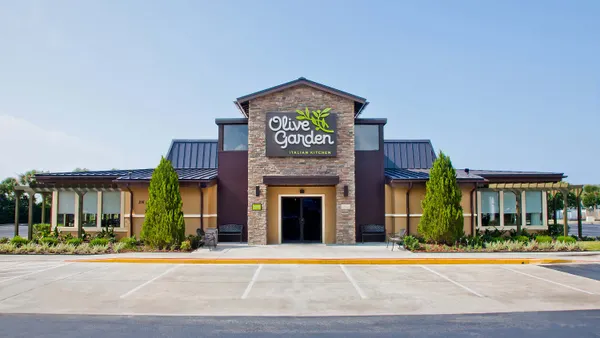The following is a guest post by Ellen Green, AVP of loyalty and CRM at Hathway.
It's a cycle we all know well. Driven by the misnomer that brand loyalty comes from getting the most impressive reward, the biggest discount or the "best deal," brand after brand has trained customers to hold off on their purchases until the next big sale or the next blowout event. Showcasing the discount then becomes the shortcut to boosting short-term metrics — while incentivizing the wrong behavior and taking a revenue hit in the process.
What's worse: There's no deeper connection formed between the brand and the customer. The brands who are winning the day are the ones who are connection-focused. That's where brand love emerges.
One moment at a time
If we think about loyalty, it's not a rational concept — it's an emotional one. We're loyal to people in our lives because we've shared little moments together and, over time, those moments coalesce into something greater and inexplicable.
Restaurants can create that same bond, little by little, and they're doing it all the time. Those story-worthy moments get amplified across social media and in "You're not going to believe this!" posts that customers share with their friends and family.
For example, Dutch Bros Coffee brings that idea to life by focusing on "interactions over transactions." The company has a mindset of hooking customers up with drinks when they are having a bad day or visiting for the first time, which builds an instant connection. As Dutch Bros digitized its rewards program and consumer relationship in January, it found the key to success was keeping its friendly culture as a focus.
The path to 'wow' moments
Emotional loyalty creates a bond between the brand and the customer that lives beyond a transaction. It's cultivated through authentic, thoughtful moments, and when a brand is able to accomplish these moments, they really "wow" the customer.
It's important to identify and take action at the moments that matter most for the customer. Those moments often reveal themselves when we zoom out and take a look at customer sentiment and emotion through the data we capture along the way.
Here are a few ways we do that:
- Capturing feedback at key touchpoints (ex. when a customer joins the rewards program, upgrades to a higher tier, etc.) and always understanding "the why"
- Recognizing and celebrating key milestones (ex. 50th visit, visiting during a new daypart, referring a friend to join, program anniversary, etc.)
- Elevating customers with a premier-tier membership experience
- Empowering associates to take action in real time (ex. replacing an incorrect order, offering a free item, etc.)
- Giving top members input and early access on new products, rewards and causes
- Surprising customers when they least expect it
- Anticipating customer needs and providing seamless experiences
Noodles & Company is a great example of a restaurant hitting these marks. They keep a continuous pulse on their customers and launched a new menu item, Tortelloni, purely based on customer feedback. They strengthened the emotional connection with their rewards members by giving them early access to try it.
Gauging the results
Emotions in general are hard to measure. Brands can get a proxy based on customer satisfaction, but Net Promoter Score (NPS) isn't enough. Utilizing a Customer Loyalty Index (CLI) allows brands to uncover the customers' "why," enabling them to take action and guide the evolution of their loyalty efforts.
From the customer's viewpoint, employees are the brand. They understand the customer journey almost as well as the customer, and they should absolutely be encouraged and empowered to either create positive moments themselves or suggest overall process improvements. Creating feedback loops from employees unlocks a treasure trove of data that brands wouldn't know otherwise. The insights employees provide can then present new opportunities for measurement, too.
The future of emotional loyalty
For most restaurants, "transactional loyalty" is still the overwhelming priority. Brands need to feel comfortable investing in the long-term gains from emotional loyalty as a business driver and have the ability to prove the impact to their leadership. Leaders will find the sweet spot of where these two worlds intersect. Dutch Bros is proof of this: Its traditional loyalty metrics — such as member enrollment, transactions tracked through the program, member engagement and retention — have surpassed industry leaders in less than six months, because the company goes beyond the transaction to make a lasting impression by recognizing and celebrating consumer milestones, such as birthdays, and offering perks like digital app stickers.
Measurement strategies will evolve. As artificial intelligence becomes more prevalent, brands may be able to measure customer emotion on the spot. You could walk into a store, and a brand could use facial recognition to read your emotional affect and incorporate your emotive state into your customer profile.
Data privacy and access to information will be closely tied to emotional loyalty, too. Customers are more likely to share their data with brands they trust and have an emotional connection with because they know they are using their data to create a better experience for them. As this evolves, we may see preference centers (where customers set the type of communication they want to receive and how often they want to receive it) becoming more sophisticated and incorporating better social tracking. The goal is to capture customer sentiment in more places — and by acting upon it, you'll create brand love.

















